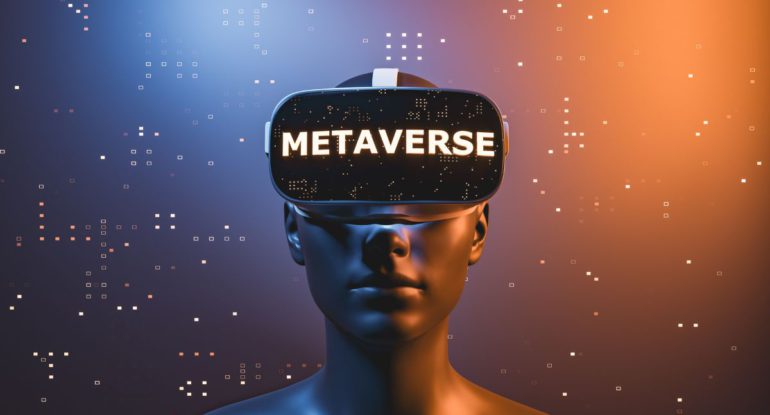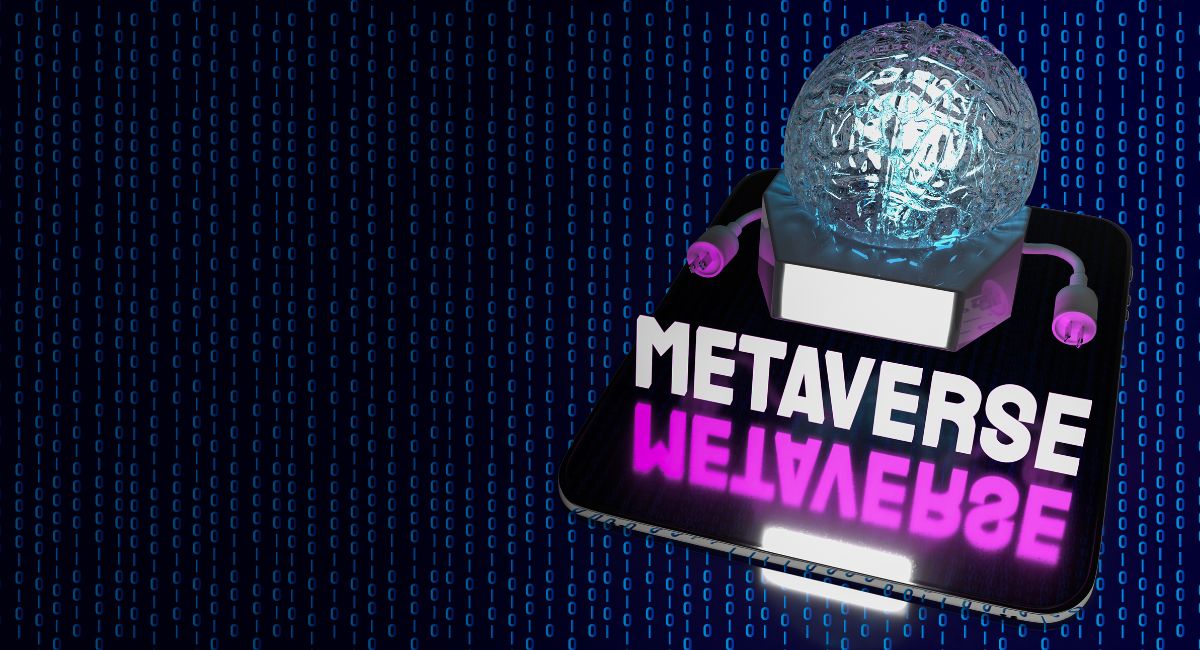What Are Metaverse Companies Building And Why Is It Important?


Also, read – Top Metaverse Companies in the World Leading the Future of Virtual Reality

What Metaverse Companies Are Developing?
 Metaverse companies are embarking on endeavors as vast and limitless as the expanses of human imagination. The foundation of their work often aligns with the seven layers conceptualized by Jon Radoff, the author of the Metaverse blog. Each layer encapsulates a fundamental principle that defines the essence of the metaverse.
Metaverse companies are embarking on endeavors as vast and limitless as the expanses of human imagination. The foundation of their work often aligns with the seven layers conceptualized by Jon Radoff, the author of the Metaverse blog. Each layer encapsulates a fundamental principle that defines the essence of the metaverse.
These layers serve as comprehensive categories, where some projects neatly fit into one, while others span across multiple layers. Broadly speaking, the majority of metaverse projects find definition within these seven layers:
1. Infrastructure: The backbone of the metaverse, infrastructure encompasses the networking implementations and hardware that power this digital realm. Analogous to the ground upon which buildings are constructed, metaverse infrastructure includes elements such as WiFi, 5G, cloud systems, and MEMS (Micro-Electro-Mechanical Systems). Physical components like GPU cores play a crucial role in processing metaversal data, forming the foundation for seamless metaverse experiences.
2. Human Interface: Human Interface delves into how individuals interact with the metaverse. It encompasses a diverse array of communication methods extended to this digital space, such as gestures, vocal commands, and neural interfaces. Even wearable electronics like smart glasses fall under the broader category of human interfaces, bridging the gap between the physical and virtual realms.
3. Decentralization: At the heart of the metaverse lies decentralization, emphasizing the absence of a single entity that owns or controls the entirety of this digital expanse. Companies within the metaverse ecosystem collaborate, building elements that complement each other. This is notably apparent in the metaverse’s economy, where collaborative efforts are key. Decentralization extends to components like AI agents and the design methodology of edge computing, fostering a distributed and interconnected metaverse.
4. Spatial Computing: Spatial computing ventures into the three-dimensional aspects of the metaverse. Encompassing 3D engines and components crucial for modeling the multiverse, spatial computing includes anything related to spatial positioning. This extends from intricate 3D modeling to practical applications like mapping real-world positions with GPS to integrate them into augmented reality, forming the core of spatial computing.
5. Creator Economy: The concept of creator economies underscores the empowering notion that the average individual can create and trade goods within the metaverse. All tools and asset materials involved in crafting metaversal content fall under the purview of the creator economy. This encompasses both the creation of these tools and their utilization, forming a dynamic ecosystem where creativity thrives.
6. Discovery: In the metaverse, discovery refers to the methods employed by users to find new content. This includes elements like AI and ad networks that seek out individuals interested in specific goods or services. Social motivators, such as word of mouth, also play a crucial role in sparking interest in a company or brand within the metaverse. Discovery is a multifaceted process, combining technological algorithms with social dynamics to enhance user experiences and content exploration.
In essence, what metaverse companies are building encompasses these seven layers, each playing a pivotal role in shaping the metaverse landscape. As these layers interact and evolve, they collectively contribute to the creation of a dynamic, interconnected digital realm that holds immense potential for the future of human interaction, creativity, and exploration.
The Interplay of Metaverse Companies and Web 3.0: Crafting the Future of Digital Interaction

The convergence of metaverse companies and the principles of Web 3.0 heralds a new era in the evolution of the digital landscape. Web 3.0, often referred to as the decentralized web, represents a paradigm shift in how information is created, shared, and accessed on the internet. Metaverse companies, driven by a shared vision of immersive digital experiences, find themselves intricately linked to the foundational principles of Web 3.0. Let’s explore how these two transformative forces are interwoven, shaping the future of digital interaction.
**1. Decentralization as a Core Tenet:
Web 3.0 places decentralization at its core, aiming to move away from the centralized models of Web 2.0. Similarly, metaverse companies embody the ethos of decentralization within their digital realms. In the metaverse, users are not beholden to a single controlling entity; instead, decentralization empowers individuals and fosters collaboration. This alignment in principles ensures that the metaverse operates on a distributed and democratic foundation, echoing the decentralized aspirations of Web 3.0.
**2. Blockchain Technology as the Underpinning Infrastructure:
Blockchain, a foundational technology of Web 3.0, plays a pivotal role in the metaverse ecosystem. Metaverse companies leverage blockchain to tokenize virtual assets, establish secure transactions, and create decentralized economies within their virtual realms. The transparent and tamper-resistant nature of blockchain ensures trust and authenticity, aligning seamlessly with the principles of Web 3.0, where users have control over their data and interactions in a secure and transparent environment.
**3. Tokenization of Virtual Assets:
Tokenization, a key aspect of both Web 3.0 and the metaverse, introduces a novel way of representing ownership and value in the digital realm. Metaverse companies tokenize virtual assets, including in-game items, digital real estate, and even virtual identities. These tokens, often built on blockchain technology, enable true ownership, seamless transferability, and interoperability across different metaverse platforms. This aligns with the broader concept of tokenization within Web 3.0, where assets are represented as digital tokens on decentralized networks.
**4. Smart Contracts Powering Interactions:
Smart contracts, self-executing contracts with coded terms, are a cornerstone of Web 3.0, providing automated and trustless interactions. Metaverse companies integrate smart contracts into their platforms, enabling users to engage in secure and transparent transactions within the virtual space. From virtual asset exchanges to decentralized governance structures, smart contracts play a vital role in shaping the metaverse’s functionality, mirroring the decentralized and programmable nature championed by Web 3.0.
**5. Interoperability for Seamless Experiences:
Both Web 3.0 and the metaverse emphasize interoperability as a key principle. Metaverse companies aim to create interconnected digital experiences where users can seamlessly navigate between different virtual spaces and applications. This interoperability is not confined to a single metaverse platform but extends to a broader vision of a connected digital ecosystem. Similarly, Web 3.0 envisions a decentralized internet where data and services can seamlessly interact across various platforms, fostering a more cohesive and user-centric online experience.
**6. Community-Driven Governance:
Web 3.0 advocates for community-driven governance, where users actively participate in decision-making processes. In the metaverse, decentralized autonomous organizations (DAOs) often utilize blockchain technology to facilitate community-driven governance structures. Users can have a say in the development, rules, and economic aspects of the metaverse. This alignment with the principles of Web 3.0 promotes inclusivity and democratization in shaping the digital spaces users inhabit.
**7. Privacy and User Empowerment:
Both Web 3.0 and metaverse companies prioritize user privacy and empowerment. Web 3.0 seeks to empower users with control over their data and online interactions. Metaverse companies, echoing this ethos, provide users with tools to control their virtual identities, assets, and interactions within the digital realm. The intersection of these principles ensures that users are active participants in their digital experiences, fostering a sense of autonomy and control.
**8. Innovation and Collaboration:
Web 3.0 encourages open innovation and collaboration, breaking away from the siloed nature of Web 2.0. Metaverse companies embody this spirit by collaborating on standards, protocols, and open-source initiatives that contribute to the overall growth of the metaverse ecosystem. The shared vision of building an immersive and interconnected digital future propels collaborative efforts, much in line with the collaborative and innovative ethos of Web 3.0.
Tempted to throw 1k into a microcap focused on metaverse/ar/vr,
Don’t want to throw the name out there just yet but they seem to be working with reputable companies and amazing partnerships as of now,
I could be wrong entirely but I see the opportunity.
Patent application.…
— Clockyy (@oClockyy) December 6, 2023
Conclusion:
In essence, the interplay between metaverse companies and Web 3.0 is a symbiotic relationship that shapes the future of digital interaction. The principles of decentralization, blockchain technology, tokenization, and community-driven governance form the common threads that weave together these transformative forces. As metaverse companies continue to innovate and align with the foundational principles of Web 3.0, they contribute to the realization of a decentralized, user-centric, and interconnected digital landscape that extends beyond the boundaries of the traditional internet. The collaborative journey towards a metaverse anchored in the principles of Web 3.0 holds the promise of redefining how we perceive, engage with, and shape the digital future.



























































